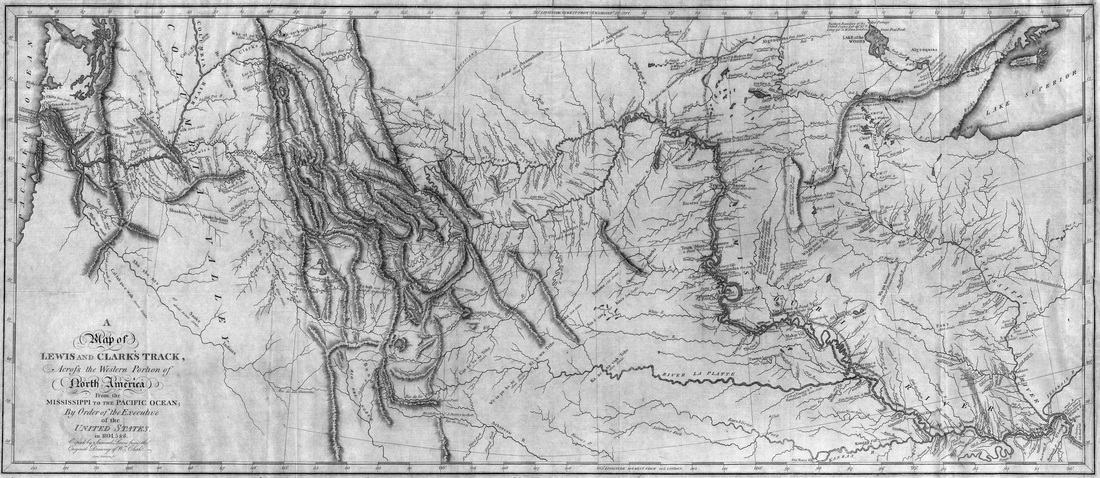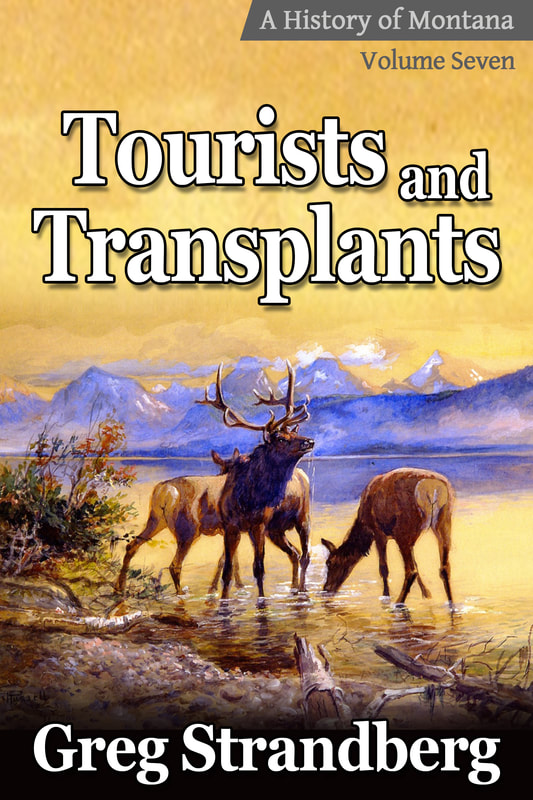The novel takes place from August, 1806 to April, 1808. It follows John Colter from the day he leaves the Lewis and Clark Expedition until he gets back to Fort Raymond a year and half later. During that time he spends one winter with two fur trappers that he met going up river, and which was the reason for him leaving the Lewis and Clark expedition. You see, these two men wanted someone to show them to the upper reaches of the Missouri, and Colter was one of the few to have been there.
They have a falling out, John Colter heads back toward St. Louis, but meets Manuel Lisa and his old companion George Drouillard coming back upriver. They’re going after furs, and Colter decides to join them. During the winter at Fort Raymond, named after Lisa’s son, Colter is sent out to meet up with the Crow Indians in Montana. This angered the Blackfeet, who felt that both groups were encroaching on their lands. It was a move that would have repercussions for years, as the Blackfeet were one of the most hostile to the Montana mountain men and fur trappers.
It was during that solitary winter of 1807-8 that John Colter was wandering around Montana and Wyoming, and the first time he stumbled upon Colter’s Hell, the first name Yellowstone National Park was known by.
Listed below are the characters that will appear in the novel, although as any creative writer will tell you, nothing is set in stone. Many of them are featured real life players in the travels of Lewis and Clark, so a lot of people may know a few of the names.
Private John Colter
Took his leave of the men on August 13, 1806. Led Forest Hancock and Joseph Dixon to Three Forks where the three men stayed together for 2 months before splitting up. Colter then lived in the wild through the winter until spring. In April 1807 he met Manuel Lisa coming up the river.
Private John Potts
From Germany, Colter’s best friend. Had been a miller. Headed to upper reaches of the Missouri with Manuel Lisa, April 1807. Ambushed along with Colter in 1808 and killed in the boat.
George Drouillard
Great scout, woodsman, and interpreter. One of the best hunters and went on special missions for the captains. Headed up to upper Missouri with Manuel Lisa in April 1807. He was a partner with Lisa.
Forest Hancock
Frontiersman heading up the river to do some trapping. Meets expedition coming down at Mandan villages in August, 1806.
Joseph Dixon
Accompanied Hancock upriver to do some trapping. Together they are guided back into the wilderness by Colter.
Supporting Characters
Major
Captain Meriwether Lewis
Suffering from wound to the thigh, could use a drink. More concerned with getting back to St. Louis than anything at this point.
Second Lieutenant William Clark
More upbeat of the two, not prone to depression or frantic thoughts. Wants a slow measured run back to St. Louis and wonders if Colter and his gun will be needed.
Private Pierre Cruzatte
Blind in one eye and near-sighted in the other, should never have been given a gun. Shot Lewis while hunting on August 11, 1806. He could play the fiddle like no other, however, and it went a long way in entertaining the men and impressing the Indians. Praised by Lewis as a river man.
Private Joseph Field
One of the best shots on the Lewis and Clark expedition. Often went on reconnaissance missions with the captains and Drouillard. Was at the fight with the Blackfeet on July 17, 1806.
Private Reubin Field
Stabbed a Blackfoot through the heart on July 17, 1806 fight.
Private John Shields
Oldest member of the expedition, 37, and a great blacksmith, gunsmith, and carpenter.
Private Peter Weiser
Headed to upper Missouri with Manuel Lisa in April, 1807.
Private William Bratton
Hunter, blacksmith and gunsmith, but became incapacitated in the spring of 1806 with a back ailment that wasn’t cured until he had an Indian sweat bath.
Minor
Sergeant John Ordway
Was threatened by John Colter and John Shields, April 29, 1804. Men were put on trial for mutiny, but both pleaded for and received forgiveness.
Corporal Richard Warfington
Tries like hell to keep his 4 magpies and prairie dog alive. The men chide him for this.
Private John Collins
Good hunter but often drunk and disobedient. Stole the whiskey from official supply while guarding it and received 100 lashes.
Private George Gibson
Good fiddle player, hunter, and interpreter.
Private Silas Goodrich
Great fisherman on the Lewis & Clark expedition.
Private Hugh Hall
Got drunk, court-martialed, and lashed along with Collins for stealing whiskey.
Private Thomas Howard
Climbed over the Fort Mandan gate when it was closed, showing Indians how it could be done. Got court-martialed.
Private François Labiche.
Great interpreter and boatman.
Private George Shannon
Got lost during the fall of 1804 for more than two weeks and nearly died of starvation.
Private William Werner
Got into a fight with John Potts at Camp Dubois. Also convicted of being AWOL at St. Charles, Missouri.
Private Joseph Whitehouse
Acted as a tailor for the men. Deserted early, but repented and was allowed back.
Private Richard Windsor
Experienced woodsman and good hunter.
Attached civilians
Toussaint Charbonneau & Sacagawea
Both present at Mandan villages when Colter leaves. Her son ‘little pomp’ would have been a little more than a year at that point.
York
William Clark’s slave, who pulled his own. Large, strong, maybe a bit overweight. Good with a rifle.
Engagé (contract boatmen)
Joseph Collin
Stayed at Arikara Indian villages in 1805 and was still there in 1806.
François Rivet
Still living at Mandan villages in 1806, where party had left him in 1805.


